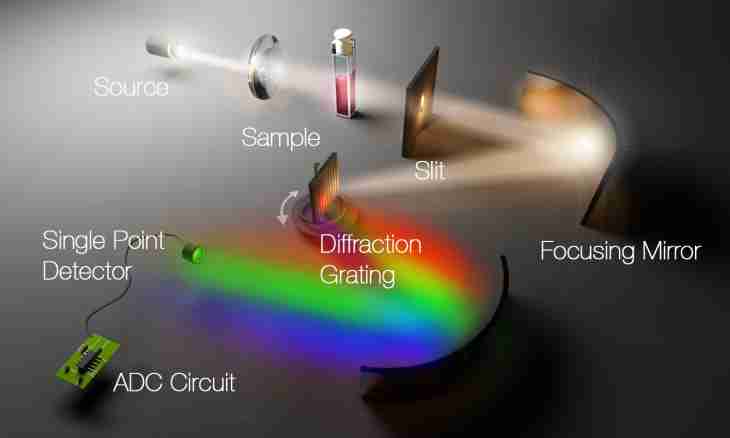Light waves deviate the rectilinear way when passing through small openings or by the same small obstacles. This phenomenon arises when the sizes of obstacles or openings are comparable with wavelength, and is called diffraction. Problems on definition of a corner of a deviation of light should be solved most often in relation to diffraction lattices - surfaces in which transparent and opaque sites of the identical sizes alternate.
Instruction
1. Find out the period (d) of a diffraction lattice - so call the total width of one transparent (a) and one opaque (b) of its strips: d = a+b. This couple is usually called one stroke of a lattice, and measured in quantity of strokes on one millimeter. For example, the diffraction lattice may contain 500 strokes on 1 mm, and then d = 1/500.
2. For calculations the corner matters (α) under which light falls on a diffraction lattice. It is counted from a normal to a lattice surface, and the sine of this corner participates in a formula. If in initial statements of the problem it is told that light falls on a normal (α=0), this size can be neglected as sin (0 °) =0.
3. Find out wavelength (λ) of light falling on a diffraction lattice. It is one of the most important characteristics defining the angle of diffraction. Normal sunlight contains the whole range of lengths of waves, but in theoretical tasks and laboratory works, as a rule, it is about the dot site of a range - about "monochromatic" light. To visible area there correspond length from about 380 to 740 nanometers. For example, one of shades of green color has the wavelength equal of 550 nanometers (λ=550).
4. Light which passed through a diffraction lattice deviates on different corners, forming at the same time a non-uniform picture of distribution with the alternating maxima and minima of illumination - a diffraction range. To each maximum there corresponds own angle of diffraction. Find out: which corner of a maximum (k) is required to be calculated. Counting is conducted from zero - central - level. For example, conditions can demand calculation of required size for the second (k=2) maximum of a diffraction range.
5. Use the formula connecting the wavelength of light falling on a diffraction lattice with the angle of diffraction (φ) of maxima of a certain order: d * (sin(φ)-sin(α)) = k*λ. Bring out of it definition of a corner φ - at you such equality has to turn out: φ = arcsin (sin(α)+ (k*λ)/d). Substitute defined on the previous steps of value to this formula and make calculations.

